A Conversation with Dr. Nate Nieto, Northern Arizona University and Head of the Free Tick Testing Program
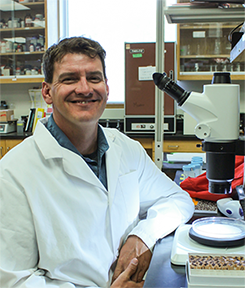 Just six months ago, Bay Area Lyme launched a free Tick Testing Program through a partnership with Nate Nieto, PhD, Assistant Professor, Department of Biological Sciences at Northern Arizona University, and his lab.
Just six months ago, Bay Area Lyme launched a free Tick Testing Program through a partnership with Nate Nieto, PhD, Assistant Professor, Department of Biological Sciences at Northern Arizona University, and his lab.
The lab accept ticks from any state in the US and ticks are tested for several bacterial infections. The goal is to learn more about the ecological distribution of the major tick vectors and the prevalence of tick-borne pathogens that people encounter in different locations around the country ultimately to improve both prevention and diagnostic measures.
The initial response to this program far exceeded any anticipations — thousands of ticks poured in from all over the nation! Here, we sat down with Dr. Nieto to talk about what he has seen in these first few months and how the program will continue to grow and evolve.
For more information about how to submit a sample, please refer to the Tick Testing page.
Dr. Nieto, tell us a little about you and your background? How did you first come to be interested in ticks and tick-borne diseases?
I grew up in southern California (Long Beach) in the inner city and then left to college where I studied Wildlife Biology (for a BS and MA degree from Humboldt State University, Arcata, CA). I worked as a wildlife biologist for consultants, the Forest Service, and as an academic for a few years, prior to a PhD at UC Davis.
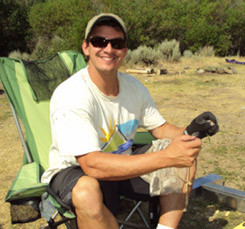 I’ve always been interested in disease and disease transmission but mostly from the perspective of wildlife. I spent years as a field ecologist (studying owls, herpetology, etc) in the North Coast of California and became intimately familiar with ticks. 🙂 I then moved to UC Davis and completed a PhD in Comparative Pathology, working on granulocytic anaplasmosis [GA], caused by Anaplasma phagocytophilum). We did research there using field ecology, molecular diagnostics, and animal model work — primarily to identify the maintenance reservoirs of GA in the western US. GA infects humans, but also a variety of wildlife species, horses, cats, and dogs. I then shifted focus to study the Borreliae, in both soft-ticks and in hard-ticks.
I’ve always been interested in disease and disease transmission but mostly from the perspective of wildlife. I spent years as a field ecologist (studying owls, herpetology, etc) in the North Coast of California and became intimately familiar with ticks. 🙂 I then moved to UC Davis and completed a PhD in Comparative Pathology, working on granulocytic anaplasmosis [GA], caused by Anaplasma phagocytophilum). We did research there using field ecology, molecular diagnostics, and animal model work — primarily to identify the maintenance reservoirs of GA in the western US. GA infects humans, but also a variety of wildlife species, horses, cats, and dogs. I then shifted focus to study the Borreliae, in both soft-ticks and in hard-ticks.
The free tick testing program is unique and exciting. Tell us a little about the concept — why start a free tick-testing program? Where did the idea come from?
Hmmm, so basically we thought this might be a good way to get the community involved in data collection and allow us to compare ticks that come into direct contact with people to ticks we test from surveillance. There are some wonderfully thorough reports from the CDC that detail, at the county level, where different ticks are in the country and what types of pathogens people may encounter there. We hoped — and have really achieved — that we could do something very similar from a citizen-science perspective (where we receive ticks not from public health surveillance, but from people who encounter them).
We hope that the results will help people stay informed as to the types of ticks and pathogens in their area. The data is pretty powerful and we hope to use this data to help determine, in a very local way, where risk is currently and how it may change in the future, in response to climate change or other landscape-level changes for example. We are also able to evaluate the amount and type of co/dual/multi-infections these ticks have. While our focus started out to be members of the Ixodes genus (Ixodes scapularis and Ixodes pacificus), we have received a lot of other tick species (those that feed on many of our pets) and should be able to say something relevant about veterinary exposure as well.
However, a misconception is that the data we send back should be used to determine whether or not someone has been infected. I’m afraid we cannot diagnose infections, as there are too many confounding conditions that may occur prior to us receiving the tick. There are numerous other resources that people can use to send ticks for diagnostics if this is what they are interested in (e.g., iGeneX). Our lab is a research laboratory only, so we recommend people to take advantage of these other avenues if they are hoping for this type of data.
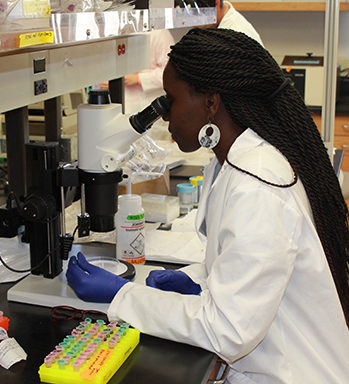 How many ticks have you received / tested since starting this program?
How many ticks have you received / tested since starting this program?
We have received >5000 ticks from over 3000 individuals since starting the program in January/February of this year (2016). That includes representatives of seven tick species (and a few lady bugs and whip-scorpions!).
From where?
So far we have received ticks from 48 states. The only two states we haven’t received ticks from are Alaska and New Mexico.
Did you ever anticipate getting this kind of response?
No way. In fact, the third week in March we received ~1700 individual packages! We initially budgeted for a much lower number (2400 samples) and didn’t think we would reach that goal actually. This is because there a number of other avenues to get ticks tested, including some fee-for-service programs as well as some local and state public health entities. So it has been a interesting learning curve for us and for the coming year we are changing a number of things about how we manage the process. One of the hardest parts has been the communication of results — as you may imagine, multiple emails per person gets pretty time-consuming. We plan to automate the submission process which should help a ton.
You’ve now “scaled up” fairly substantially. How will that impact your turnaround?
Turnaround is still slower than we’d like but we are catching up. Again, we never thought we’d get this type of response. You will receive your data but we can not promise instant turnaround. [Note: The stated goal is to communicate results back within 5-7 business days of receipt of ticks but it will take some time to get there. Ticks are tested in batches and currently the team is typically able to deliver results within 21 days. For more information see the Tick Testing page.]
What kind of results are you seeing? Have there been a lot of ticks testing positive for disease? What diseases?
So far, we have ticks that have tested positive for Borrelia burgdorferi, Borrelia miyamotoi, Anaplasma phagocytophilum, and Babesia microti. We also test a selection of ticks for Ehrlichia and Rickettsia, however we are still analyzing this data. As expected, the majority of positive samples are from the northeast, upper midwest, and California. This includes a number of co(2 pathogens)- or multi (3 pathogens)-infected ticks. In the coming couple of months, we will be building high-resolution risk maps for the ticks and each of the pathogens so that others may look for their own region and see what type of risk for the pathogen or even the tick may be locally.
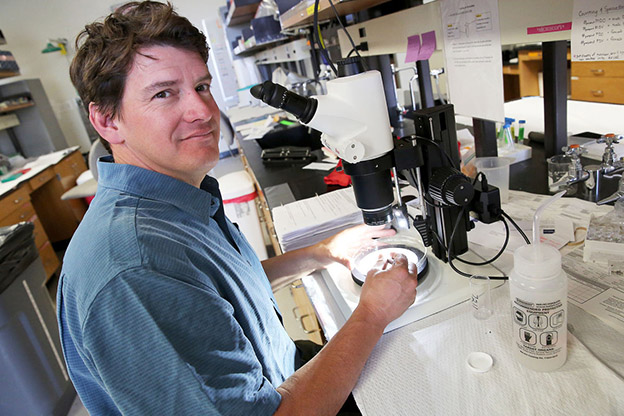
Surely many people submitting ticks for testing will have found them on person and may be a bit anxious about the results. Is there anything they should know when they send in the ticks to you?
We received a HUGE number of ticks that overwhelmed our small lab’s capacity. This response is a blessing and a curse. The data being collected by people in the community and analyzed by our group is a powerful testament to the need and interest for this type of widespread testing. While we have received a ton of thanks for this work, it has also caused some anxiety. We apologize for any frustration and would like to change a few things with how we return the data to folks.
As we have messaged since the beginning, we recommend that if you are wishing to use the analysis for your own personal health care decisions you send your tick to one of a number of pay-for-service companies that do allow for this type of diagnosis. These include IGeneX, and TickReport.
We believe we have received many samples from people hoping for clinical data because of (in some cases) the prohibitive cost of the tests. Again, we are sorry but this type of diagnostic support has never been our intent. As mentioned above, the goal was to receive ticks from people across the country to: (1) get a better handle on the distribution of the various ticks encountered in North America; (2) understand where individual pathogen species are of highest risk; and (3) determine the probability of co-infections or multiple-infections in certain portions of the country. We can then provide a detailed risk map that compares public health surveillance efforts and citizen scientist-collected data.
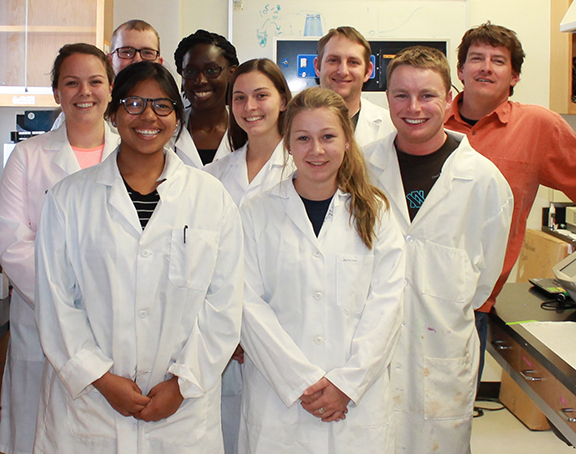
How quickly are you going to be able to use this data for new research and how? What kind of research do you anticipate coming from or being possible with this new data?
It is already happening. A number of advocacy groups have reached out and we have shared our data for a detailed understanding of risk in their area. In addition, we know have nicely detailed assessment of tick distribution and phenology for the western US. This data is being used as preliminary grounds for other grant applications where we can now ask detailed questions in ecology and evolution on the maintenance and emergence of tick-borne pathogens in the West.
As many of you know, the western ecology of Lyme is pretty different than in the east and upper midwest. In California there are numerous Borrelia spp., each with their own reservoir host and vector ecologies. What we hope to do with the data collected here is identify where we see the strains of Borrelia most likely to cause human disease and where and what conditions allow for the emergence of new strains or increases in more dangerous ones. And ultimately, we hope to understand how public health management can be used to reduce or block the transmission of tick-borne pathogens to people.
Getting a new program going is always a big undertaking… What has been most surprising or challenging about getting this program running? Anything you ‘now know that you wish you knew then’?
The biggest lesson thus far has been in our underestimating the demand for this kind of service. Many hundreds of thousands of people are at risk for tick-borne pathogens in North America and people are increasingly aware. We simply had no anticipation of the scale of response we would get. Also, and something I suppose we did know already, the Spring of the year is incredibly important time to be vigilant about tick exposure, as evidenced by the number of responses we have received.
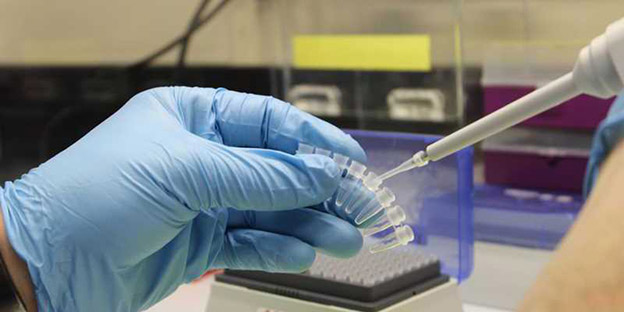
For more information about Dr. Nieto’s lab at Northern Arizona University, click here.
For details about how to SUBMIT A TICK TO THE FREE TICK TESTING PROGRAM, click here.
Tick testing is important for a number of reasons. Please don’t forget that tick checking and tick removal are important as well. For proper tick removal, Tick Man Dan’s “TickEase” is your best resource. Visit the site at http://www.tickease.com.
We couldn’t agree more and encourage folks to tick-check every time they have been in potential tick habitat — which may include your backyard! Also, be sure to wash vigorously in a warm shower or bath. Read here for more tips about how to properly check for ticks.